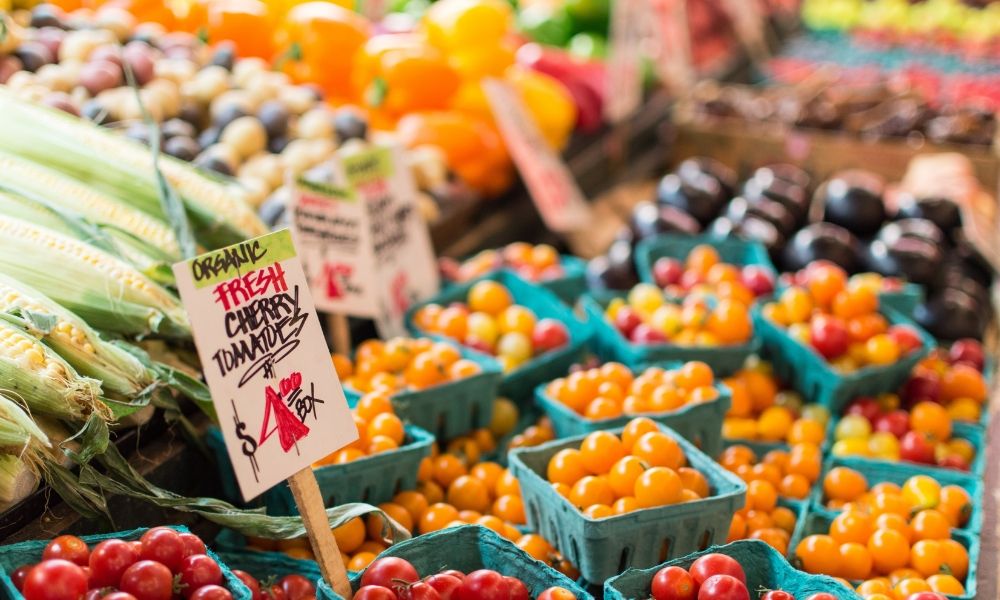

Summer Produce Guide: The Best Fruits & Vegetables for Warm Weather
Summer is abundant with fresh fruits and vegetables that are filled with nutrients that your body craves. It's this season when we welcome the quintessential summer fruit - watermelon - and the star of our summer seasonal, Watermelon Mint Chili, coming to you June 21st. Eating more fresh produce has incredible health benefits and has been shown to lower your risk of heart disease, including stroke or heart attack. Fresh produce contains many nutrients including potassium, dietary fiber, folic acid and vitamins A and C, and having a well-balanced diet with plenty of veggies is proven to help you live a longer, healthier life. Benefits of Eating Seasonally Fresh Produce Seasonal produce is much fresher, tastes better and has more nutrients than produce that isn’t currently in season. Take it even one step further by getting your produce from local farms shortly after harvest. One major benefit of buying local, seasonal produce is that it is much fresher since it doesn’t have to be transported long distances. On top of local seasonal produce tasting better it also supports your local economy and helps farmers stay in the community and thrive. Also, a recent study showed that direct-to-consumer producers are less likely to apply pesticides and herbicides than conventional producers. Without further adieu, here is the Boochcraft Summer Produce Guide. Summer Squash These guys are plentiful during summer and go with a variety of dishes. You want to go with a firm squash with unblemished skin and the smaller ones typically have smaller seeds. Keep in mind that summer squash isn’t as hardy as zucchini, so you want to eat them quickly. Zucchini Ripe zucchini look similar to ripe summer squash - firm and without blemishes on the skin. These veggies are great for improving digestion, lowering blood sugar levels and supporting healthy circulation. Carrots Look for firm carrots with bright color and smooth skin. If you see carrots that are limp or black near the tops, they are not fresh. Carrots have been linked to lower cholesterol levels and improved eye health. Eggplant Ripe eggplants are firm and shiny with their fuzzy green cap tightly attached. When you press on an eggplant, the vegetable should spring right back up without showing the indentation. Store eggplant on the counter, not in the refrigerator. Green Beans Bright pods that are firm are the best - avoid the pods that are bulging with beans. The pod should break cleanly when snapped and the ends should be stiff. Green beans are a great source of fiber, potassium, folate, protein, iron and zinc! Cucumbers Always go for the cucumbers with firm ends. Pro tip: smaller, thin cucumbers typically taste sweeter and have smaller seeds. Cucumbers are filled with water and nutrients while being very low in calories. Tomatoes Ripe tomatoes will smell fragrant and will feel heavy while having unbruised skin. You want your tomato to be juicy without feeling too soft. Don’t store your tomatoes in the fridge unless you think they are about to go bad. Tomatoes are high in potassium, lycopene and vitamin C. Basil Well basil is technically an herb, but it goes well with all of the items on our summer produce list and it's a game-changer, so we’re including it! Make sure to go for the basil that isn’t wilted or has dark spots. Basil is also very easy to grow and contains powerful anti-inflammatory properties. Peaches The best peaches are soft, but not squishy, and they should smell delicious. Peaches are best eaten at room temperature, but refrigerating them can extend their freshness. These tasty treats are filled with potassium and vitamins A and C. Plums Choose plums that are slightly soft to the touch but don’t squeeze them to determine ripeness. When you hold a plum in your hand, you should feel the fruit give a little. Plums have been shown to help improve the health of your heart and are great for stomach issues. Blueberries Stick to organic whenever possible and make sure the bottom of the container looks clean - you don’t want to get blueberries with juice at the bottom because that is a sign that some have gone bad. Blueberries are filled with antioxidants that protect your body from free radicals which can cause damage to your cells and contribute to aging and diseases like cancer. Watermelon Our summer main squeeze! These beauties are at their peak from mid-June to late August, but can be found fresh between May and September. Go for the firm, symmetrical melons without cracks or soft spots. Look for the pale yellow patch on the bottom - this indicates where the watermelon sat on the ground to ripen. Watermelons are high in potassium, lycopene and vitamins A and C. We hope you enjoyed our summer produce guide and found some inspiration for new fruits and veggies to peruse at the farm, farmers markets and grocers this season. Remember to opt for health conscious companies that make sustainable choices whenever possible. Learn more about the Boochcraft process here and understand why it is important for us to choose organic, non-gmo ingredients that are locally sourced.


